We can all agree that there’s been a lot of uncertainty recently. Many brands have had to shift their focus and deal with both the changing environment and the changing needs of their customers.
Uncertain times can be unique opportunities for businesses to bolster their customer relationships. As customer expectations change, brands can revisit how they interact with their customers and explore different ways of engagement. Customers, too, will remember how companies behaved and treated them during stressful conditions. Many switched brands, or reasserted their expectations with existing partners.
So what needs to be done to get on the customer’s good side in 2021 and beyond? How can adopting a customer-centric approach help? And what role do flexible digital tools play in all this? Keep reading, we’ll explore all these questions below.
The B2B customer requires a different approach
In order to improve the customer experience, we must first identify what B2B customers want. To do that, we have to understand the difference between a consumer and a business customer.
Consumers have primarily short-term, transactional relationships and tend to purchase small amounts. They are often more price-conscious and respond well to time-sensitive discounts. Thus, to build loyalty and satisfaction, brands invest heavily in marketing to entice their customers with promotions.
A B2B business operates in an entirely different manner. Customers are likely to be more demanding and have strict requirements about what they want, how they purchase it, and under which conditions.
When we compare B2C with B2B statistics, we find that B2B customers are dissatisfied with their online interactions. According to Gartner’s 2020 research, B2B buyers felt that making a purchase is more complicated and time-consuming than ever before. This has led many businesses to craft powerful, personalised experiences with self-service user portals.
However, even that may not be enough. In a more recent survey of 1,100 B2B customers, Gartner revealed that customers also find it difficult to make supplier decisions over digital channels. In fact, over 64% of B2B buyers are overcome with choice and cannot differentiate between different B2B experiences.
The reasons for this are several. B2B sales activities have historically taken place in the physical realm. Customer relationships were based upon physical meetings, field sales, and trade shows. Sales reps were tasked with cold calling and mailing out physical brochures. Many manufacturers resisted investing in digital collaboration tools and self-service technologies, even as the B2C market did.
Looking at customer satisfaction in a new way
The pandemic gave birth to new customer trends, reinforced existing ones, and permanently altered buying patterns.
Today’s users have more options than ever to evaluate, cross-shop between competing stores, and select the option best for them. They’re sensitive to their experiences when researching and making the purchase – and notice friction quickly. It’s not surprising that, during the pandemic, over 70% of B2B buyers considered switching to competing vendors.
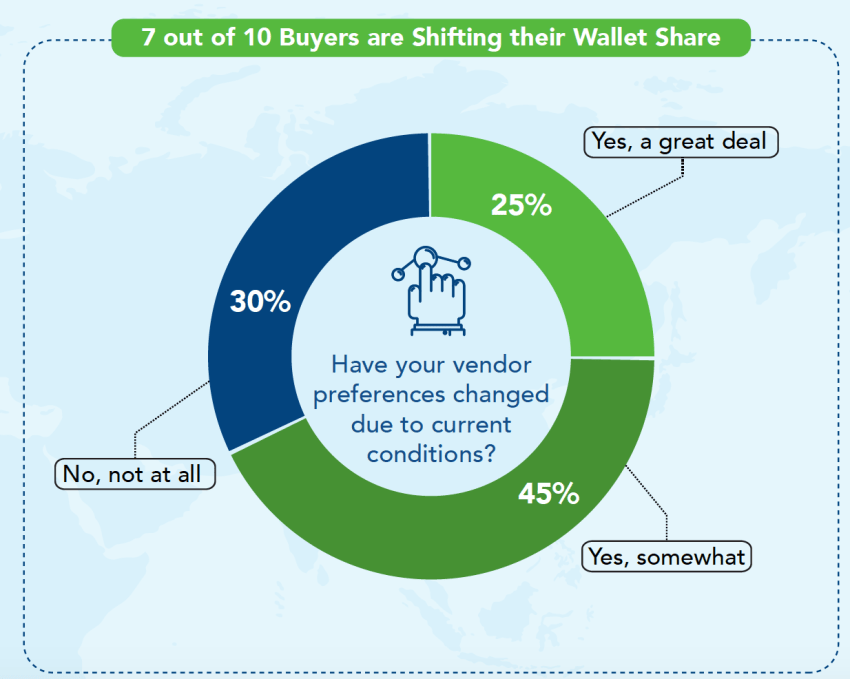
Unusual times can translate to unusual customer demands. When brands face new challenges, they must address them or risk losing customers. A customer-centric approach means placing the customer at the centre of everything you do. Businesses need policies and technologies that make it easy for employees to form relationships with customers. By investing in this, they can encourage customer loyalty, remove the support burden, and allow customer-facing teams to focus on more important activities. A customer-centric culture starts with:
- Appointing a customer-focused leadership such as COO (chief customer officer) to drive customer-focused strategies and processes.
- Establishing and sustaining a culture of generating and testing ideas across management and employees.
- Taking down business silos, enacting better communication and collaboration strategies, and investing in technology to improve customer visibility.
Rethinking the role of customer service
In the early days of the pandemic, businesses had to act fast and deliver online customer service just to survive. However, the protracted nature of uncertainty demonstrated that support teams must plan for the long-term and adjust to new customer experiences.
Moving forward, B2B customers will demand better online service and be more attuned to poor experiences. The world saw an accelerated shift to digital, so they’ve been forced to experience and compare different types of service over a long period of time. It’s vital, therefore, for businesses to get up to speed quicker than ever before to meet expectations. In other words, the collective customer service bar is a bit higher and isn’t coming down anytime soon.
Having said that, your customer service approach will largely depend on the industry you operate in and the complexity of your product and service.
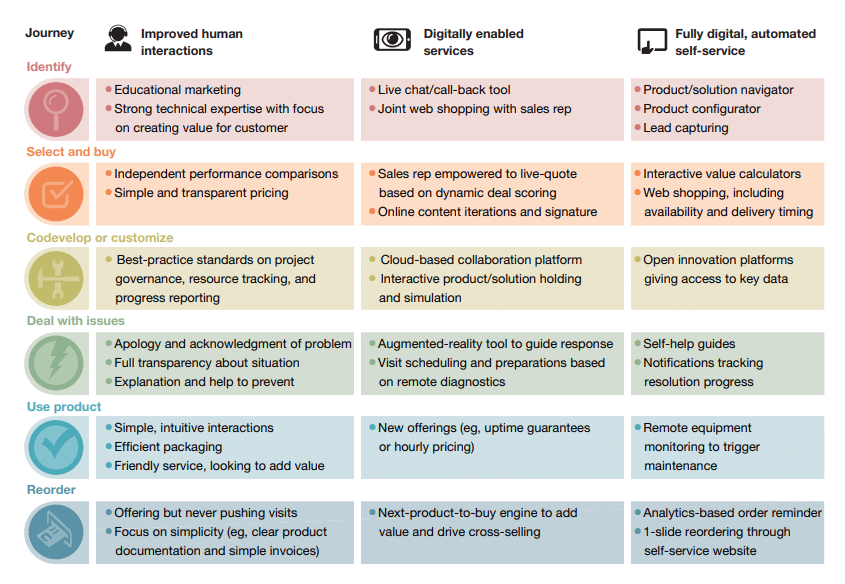
For example, if the complexity of the product and the buying process is low, a self-service portal will suffice. More complex products can leverage sales reps to empower users to reach their goals. Lastly, in cases where strong technical expertise and mentoring is required to identify the best solution, the focus on human interaction should be prioritised.
Invest in support and collaboration tools
Uncertainty brings with it stress and anxiety, so making the right information easily accessible to customers is key to reassuring, supporting, and enabling customer satisfaction.
According to HubSpot’s 2020 State of Customer Service report, customer-facing teams are not using technology to their full advantage. Research demonstrated that only 42% of respondents use a help desk, only 37% have a shared inbox, and only 32% use a CRM system – even though their effectiveness has long been proven.
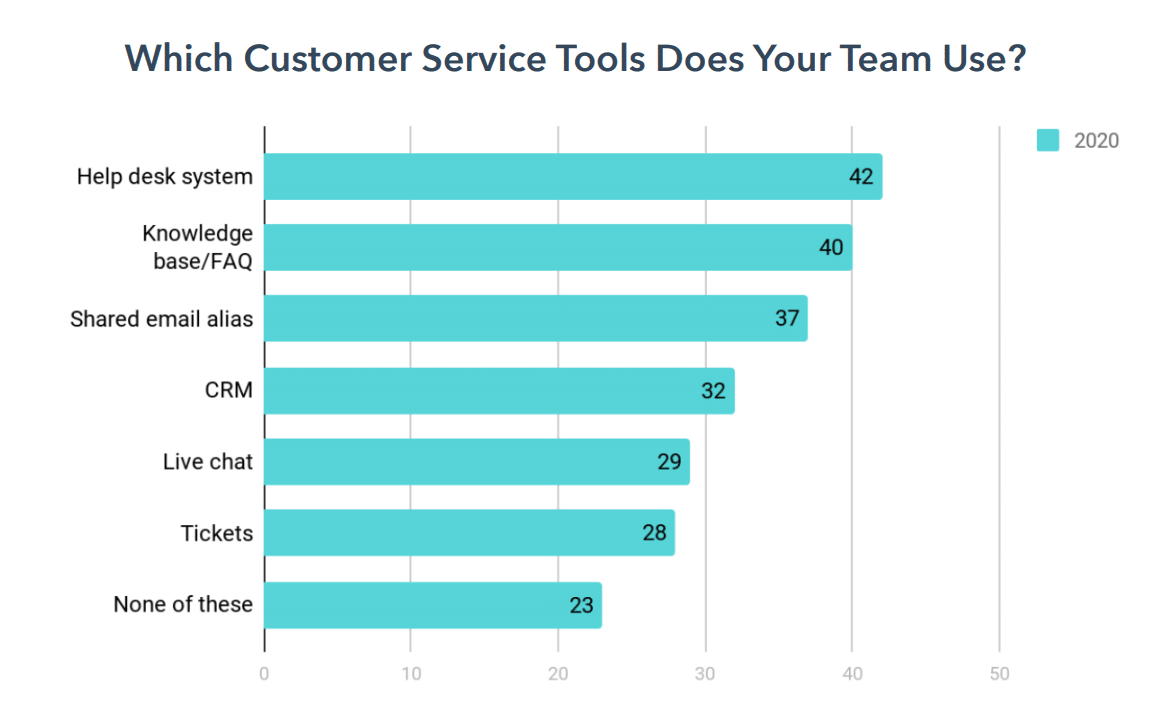
Offering excellent customer experiences during periods of uncertainty is already challenging. Add in the need to address increasing sales and support volumes without the right digital tools and processes, and you’re in trouble. Luckily, plenty of diverse tools on the market are designed to help customer-facing teams better do their jobs.
Help desk tools
As far as software goes, customer service software will be the most heavily used tool in any support department. A help desk captures customer requests and helps support staff manage and address these requests. Helpdesk ticketing tools improve agent productivity, enhances the quality of customer interactions, and, most importantly, boosts customer satisfaction.
B2B customers are more valuable (in monetary terms) and usually require much more care than B2C customers. This means agents need the customer context and the right steps to resolve every ticket successfully. Having a helpdesk solution that integrates with your communication tools is key here.
Self-service tools
Self-service tools give customers the ability to get answers to their questions immediately, on their own terms. Regardless of where they are, at what time of day, or what device they’re on, they can count on getting the correct answer. For B2B customers, self-service usually takes the form of customer portals that deliver personalised pricing, order data, and shipping updates.
Here, too, it’s important to differentiate between B2C self-service and B2B self-service. In B2B, there’s much less room for error. Inaccurate stock level, product detail, or the wrong shipping option can be unacceptable to B2B customers. Top B2B eCommerce software solutions, such as OroCommerce, come with an online customer portal, where customers can view their order history and track deliveries. Most importantly, the sales team has access to data on every customer and their transaction.
Contact centre tools
Even though many customers prefer to solve issues by themselves through self-service, there’s still a substantial amount that prefer phone support. It’s an immediate, intimate, and to many, a familiar way to resolve issues. Talking to a real human builds bonds, enables trust, and in many cases, a quick and efficient way to resolve issues.
As mentioned above, B2B clients are much more demanding than their B2C counterparts. After all, a single B2B customer can involve multiple stakeholders, and order dozens of line items per order. With a single customer service mishap – like keeping the customer on hold for too long – there’s greater risk of losing customer trust. Contact centre tools, such as RingCentral centralise communications, be it email, phone, or instant messages into a single platform, delivering the right bit of content with the right team member.
CRM tools
Your CRM will give you a birds-eye view of the customer journey, as well as their touch points across different teams and departments. It’s critical for coordinating marketing activities with sales, and delivering a unified message to customers at the right time.
B2B sales cycles are longer, ordering is more complex, and customers are more diverse. Having a great CRM in place can make it much easier to keep track of them, as well as provide a top notch experience.
ERP tools
If your B2B business manufactures or distributes physical products, you’ll need an ERP system to help you remain efficient over time. An ERP can help you centralise critical information between departments, manage projects, stay within requirements, and optimise the day-to-day processes of running a complex business.
Don’t forget about connectivity
Today’s organisations rely on more digital solutions than ever before. Businesses are finding that manual processes are slow, inefficient, and unsustainable over the long term. With an increased reliance on digital tools for a wide variety of tasks, connection and integration becomes crucial for quick access to data to grow partner relationships and customer experiences.
According to research by Forrester, 31% of companies have disconnected sales processes. If a company cannot determine how, when, and between what system data gets transferred, it becomes difficult to maintain high-quality B2B experiences that result in satisfied customers.
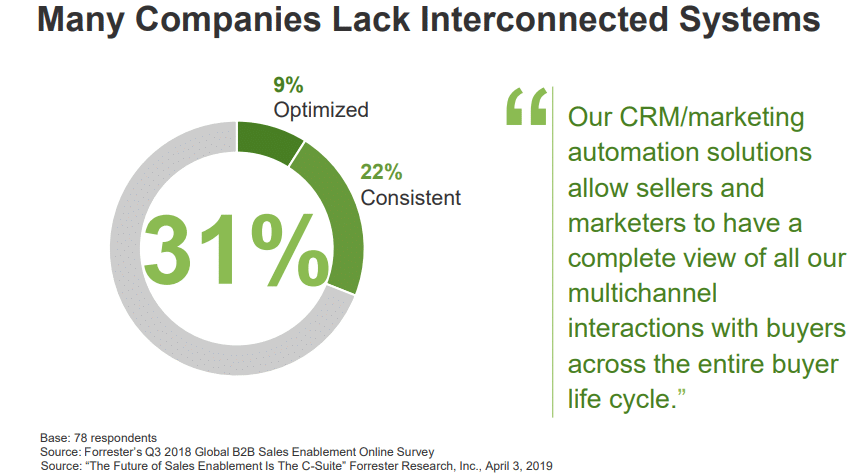
To deliver consistent, high-quality customer experiences, integration is crucial. Augmenting your communication tools with data from other tools helps you streamline internal coordination and deliver messaging that resonates with customers, critical during times of uncertainty.
Be ready for what’s around the corner
We open a new chapter of sales, where customers demand deeper relationships cultivated over a host of channels. During the pandemic, customers have voiced their expectations, and many businesses have stepped up to the plate. As uncertainty continues, customers will be more receptive to experiences that meet and exceed their needs.
According to Edelman’s 2021 trust barometer, business is now the most trusted institution when compared to government, media, and NGOs. Customers place trust and loyalty into businesses that treat them well during difficult times. This, in turn, elevates their status and gains them new market share.
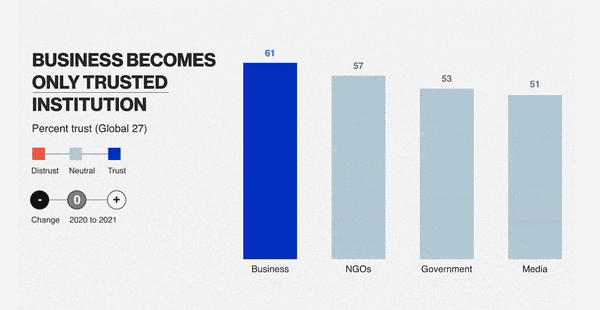
Yet organisations face more communication and collaboration challenges than ever. Business customers are growing more demanding in where, when, and how they want to purchase. Sales cycles and purchase decisions are growing more complex, and the competitive landscape is always shifting. Businesses must adapt or make way for others.
Luckily, the market is full of tools and processes to prepare you for the new customer and their demands. Spend some time and examine your sales and collaboration processes, and you’ll be in a better position to select technology to help you master your environment.
Originally published Sep 16, 2021, updated Jan 16, 2023
